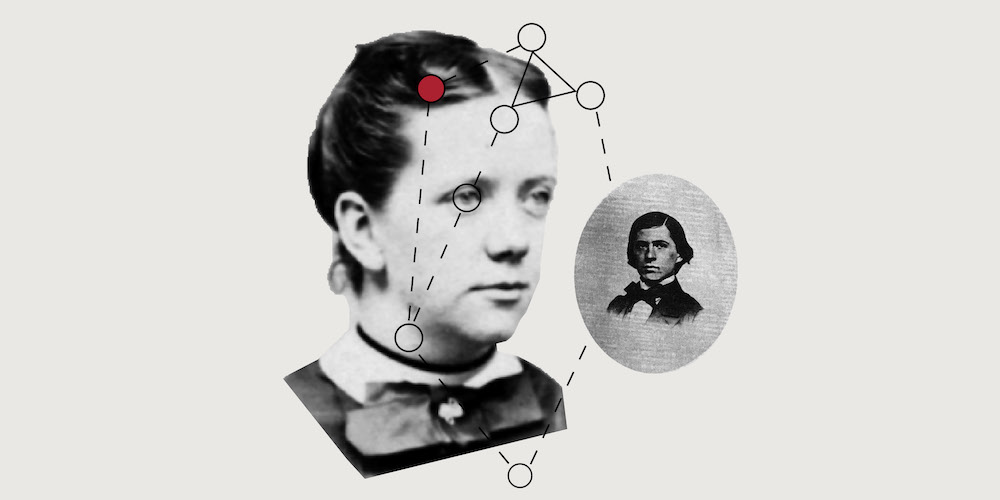Christine Ladd-Franklin Cognition Lab
Our lab is funded by and housed at the Institute for Studies in Pragmaticism, Main Library Building, 3d floor. Room 305
The Name
The lab is named in honor and recognition of the valuable scientific contributions Christine Ladd-Franklin achieved in the fields of optics, experimental psychology and logic following Charles S. Peirce's Relational Logic.
The Purpose
The primary purpose of the Christine Ladd-Franklin Cognition lab is to provide faculty and students from all disciplines with the equipment and software needed to support interdisciplinary research on cognition, vision, communication and all possible problems associated to human behavior and reasoning.
The Equipment
Our lab utilizes fNIR and eye tracking devices to provide powerful and flexible equipment to measure and analyze cognitive function and vision.
Functional Near-Infrared Spectroscopy (fNIRS) is non-invasive and uses near-infrared light diffusions through the scalp and brain to monitor, image, and map the hemodynamical reactions of the brain to specific stimuli. fNIR devices have been extensively used for multidisciplinary research including Neuroscience, Robotics, Disability studies, Visual NSD Auditory studies, Psychology, and educational research, to name a few.
Our fNIR device provides real-time monitoring of tissue oxygenation in the prefrontal cortex while individuals perform cognitive tasks to assess brain functions – such as perception, memory, learning, attention, and decision making.
Our VT3 Mini Eye Tracker allows researchers to detect precise measurement of eye movements to draw conclusions about attention, concentration, awareness, and other mental states. The findings from these devices can be used to better understand human behavior and reasoning processes.
The Software
Our lab is equipped with BIOPAC software to gather and analyze data for both the eye tracker and fNIR device. By combining eye tracking with the software program AcqKnowledge, researchers can create experiments, synchronize eye tracking and physiology data, and analyze areas of interest. The eye tracker data metrics include gaze position, dwell times, blink rates, pupil size, and much more to be used in further analysis. Supporting frame rates from 42Hz to 200Hz, the mounted eye tracker provides stable tracking over a range of users. Using our fNIR device with fNIRSoft, data can be processed, analyzed, and visualized using brain mapping over brain surface images.
How to Access
Our lab welcomes graduates and researchers from all disciplines across campus. Please contact us for more details about terms of use and scheduling.
Contact:
Brianna Sanchez
brianna.sanchez@ttu.edu
Tel: 806.834.0999
Main Library Building, 3d floor, room 305.
Christine Ladd-Franklin, a short bio.
Institute for Studies in Pragmaticism
-
Address
Institute for Studies in Pragmaticism, Texas Tech University, Box 4002, Lubbock, TX 79409-0002 -
Phone
806.742.3128 -
Email
pragmaticism@ttu.edu

